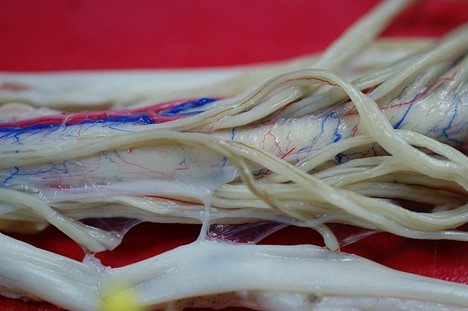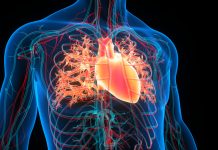
A team at Rutgers University have figured out how to regenerate tissue for spinal injury symptoms – using AI and robotics to create therapeutic proteins
Using a US National Science Foundation grant, a team have stabilised an enzyme that can actually reverse and regenerate tissue damage.
Spinal injury symptoms harm communication between brain and body
The spinal cord is a crucial part of human mobility, sending messages between the brain and the rest of the body. Meninges, layers of tissue, and a column of vertebrae surround the vulnerable spinal cord. When people experience spinal injury symptoms, they have probably had a sudden, traumatic blow to the vertebrae. If that protective column of bones fractures, this can create a dangerous internal ecosystem – with the pieces damaging both the spinal cord and surrounding nerves.
In the most tragic outcome, the spinal cord can be completely severed.
For most survivors, the only treatment options are steroid injections, surgeries to ease any blood clots or trapped nerves, and continuous physical therapy. Part of these treatments are psychological, as there are currently no widely-available cures to a damaged spinal cord.
Enzyme can repair spinal cord tissue, but fails at human body temperature
Now, scientists at Rutgers believe they have an answer. They have created a potential treatment, published in Advanced Healthcare Materials, which is a therapeutic protein that can go into the body and repair spinal cord tissue specifically.
Dr Rajiv Mahajan at the Adesh Institute of Medical Sciences and Research, Punjab, India, recommended that human trials should begin on this specific enzyme – which he described as an “attractive option” for treating spinal cord injury, in a paper published 2018.
After a spinal cord injury, secondary inflammation creates dense scar tissue. This scar tissue is the villain, preventing or even outright stopping tissue regeneration. If these scar-tissue creating cells were essentially deactivated, then the human body could stand a chance at repairing the tissue itself.
ChABC enzyme now functions for one week, with help from new polymers
The ChABC enzyme is notoriously volatile. It can’t survive in the normal temperature of the human body, losing all activity within a few hours – but it is the enzyme that can repair spinal tissue.
Since the ChABC enzyme can repair scar tissue molecules and promote regeneration, it is clearly a an enticing treatment option. However, because of how easily the natural temperature of the human body destroys it, this treatment option would mean multiple high-cost infusions – every few hours. This would be a completely inaccessible and expensive option for the majority of the world.
So, the team created copolymers that stabilise ChABC, to the point that it can function in human body temperatures for even one whole week. One of the copolymers even boosted ChABC activity to 30%, considered one of the biggest breakthroughs in utilising the enzyme so far.
“This study represents one of the first times artificial intelligence and robotics have been used to formulate highly sensitive therapeutic proteins and extend their activity by such a large amount,” said Adam Gormley, the principal investigator.
“The therapy may someday help people lessen scars on their spinal cords and regain function.
Treatment isn’t ready for mass use yet, but scientists remain hopeful
While these results are promising, the treatment is years away from being in mainstream use. Human clinical trials are still far off, depending on how scientists demonstrate that the newly armed ChABC enzyme really works.
“This inspiring result demonstrates an excellent implementation of the research philosophy of the Materials Genome Initiative and NSF’s Designing Materials to Revolutionize and Engineer our Future program,” said John Schlueter, a program director in NSF’s Division of Materials Research.
“By integrating data-driven optimization, robotic polymer synthesis, and high throughput testing, these researchers have made significant improvements in retained enzyme activity after three iterations of active learning.”







